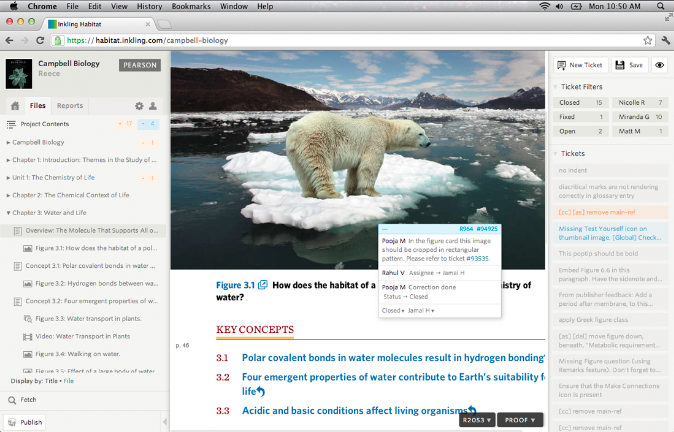Inkling Habitat: reinventing the print press?
16 Mar, 12 | by BMJ
Online publishing startup Inkling (who featured at this week’s HighWire Press Conference in Palo Alto, CA) has created a new tool that it says will appeal to professional, large-scale publishers. The software, known as Habitat, will use XML and HTML5 that can be read on a variety of platforms, including an upcoming Inkling web reader. In theory, it sounds pretty similar to Apple’s iBooks Author, but Habitat is specifically designed for large teams of collaborators with sharing and collaboration tools.
![]()
If anyone has insight into Apple’s educational efforts, it would be Inkling Co-founder and CEO, Matthew MacInnis, who was responsible for Apple’s expansion into educational markets in Asia and later a senior manager of all Apple’s international education efforts. MacInnis told us that the Inkling team set out to build a publishing platform that would redefine digital media, starting with reinventing the textbook. But in doing so, they’ve discovered that to reinvent books, they’ve had to go back to ground zero and re-imagine the entire printing process itself.
Adobe’s InDesign has long been the de facto standard for formatting and laying out publications, magazines, newspapers, textbooks, and so on. While the process that goes into producing publications and textbooks is innately collaborative, it remains a complicated, convoluted, and time consuming process. While iBooks looked to solve this problem, the main use case for its Author tool seems to be for individual teachers who want to publish books for their classrooms.

Inkling’s new ‘software environment’ targets the other end of the spectrum from iBooks: professional publishers. It gives them an industrial platform that includes seemingly everything they need to create and publish interactive content for both the iPad and HTML5-based web content.
A key feature is that everything lives in the cloud, so that teams of editors, authors, and production partners can collaborate on textbook (or digital publishing) projects from around the world. Using the collaborative cloud, team members can see the same thing as their counterparts in India, staying in sync throughout the process.
Among the platform’s other features, Habitat includes automated error reporting, as it scans the content every time it’s published to make sure it all works, automatically finding broken links, missing files, etc. Habitat also automatically saves every version of the entire project, every time, from start to finish, which means that editors can rollback changes at any point during the process — all the way back to the beginning.